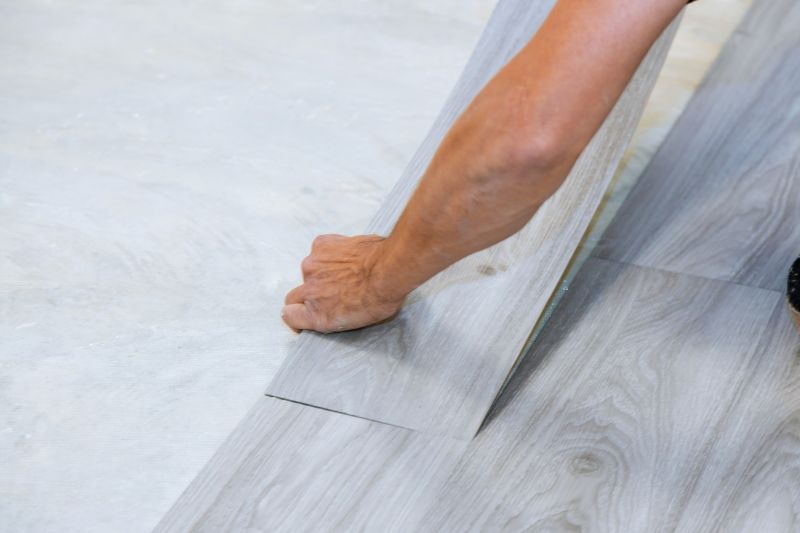Top-Rated Products For Efficient Subfloor Installation Projects
Discover tools and materials that streamline your process and help you achieve a professional-quality subfloor setup.
 Selecting the right products for subfloor installation is essential for creating a stable and durable foundation for flooring projects. The process involves various materials and tools designed to ensure the subfloor is properly prepared, leveled, and secured. From moisture barriers to leveling compounds, each product plays a critical role in achieving a smooth, even surface that can support the final flooring material effectively.
Selecting the right products for subfloor installation is essential for creating a stable and durable foundation for flooring projects. The process involves various materials and tools designed to ensure the subfloor is properly prepared, leveled, and secured. From moisture barriers to leveling compounds, each product plays a critical role in achieving a smooth, even surface that can support the final flooring material effectively.
Top Overall Option
Multi-Purpose Subfloor Underlayment
A versatile subfloor underlayment designed to provide a smooth, stable surface suitable for various flooring types. It offers excellent moisture resistance and ease of installation, making it a reliable choice for many projects. Its adaptability helps ensure a solid foundation, accommodating minor imperfections and enhancing overall floor performance.
Types of Products For Subfloor Installations
Moisture Barriers
Materials that prevent moisture transfer from the ground or underlying surfaces, protecting the subfloor and flooring from water damage.
Subfloor Plywood Panels
High-quality plywood sheets used to create a sturdy, level base for flooring installation, available in various thicknesses.
Concrete Backer Boards
Durable boards designed for tile and stone installations, providing a stable and moisture-resistant surface.
Self-Leveling Compounds
Pourable mixtures that fill in low spots and create a flat, even surface for flooring installation.
Underlayment Mats
Cushioned mats that provide sound absorption and a smoother surface for laminate or vinyl flooring.
Vapor Barriers
Thin films that prevent vapor transmission, helping to control moisture and reduce mold risk.
Soundproofing Underlayments
Materials designed to reduce sound transmission between floors, ideal for multi-level buildings.
Fastening Adhesives
Specialized adhesives for securing subfloor panels and ensuring stability during installation.
Expansion Joints
Materials that allow for movement and expansion of the subfloor, preventing cracks and buckling.
Edge Trim and Transition Strips
Components that provide a clean finish and transition between different flooring surfaces or levels.
Popular Choices
Widely used for protecting subfloors from ground moisture, available in various thicknesses and materials.
Commonly selected for creating a solid base for multiple flooring types, easy to cut and install.
Popular for achieving a flat surface, especially over uneven concrete slabs or wood subfloors.
Effective in controlling moisture vapor transmission, often used beneath concrete slabs or wood subfloors.
Chosen for reducing noise transmission, especially in multi-family or multi-story residences.
Popular for laminate and vinyl flooring, providing cushioning and sound absorption.
Trusted for securing subfloor panels firmly in place, ensuring long-term stability.
Frequently used to accommodate movement and prevent cracking in large areas.
Commonly used to create smooth transitions between different flooring types or levels.
A well-installed subfloor can help prevent issues such as squeaking, shifting, or uneven wear over time. It is important to assess the specific needs of your project, including the type of flooring to be installed, the condition of the existing surface, and environmental factors. Proper preparation with the right products can enhance the longevity of the entire flooring system.
When choosing products for subfloor installation, consider factors such as compatibility with existing materials, ease of application, and the level of reinforcement provided. Using high-quality materials and following manufacturer instructions can lead to a more successful installation. Whether working on a small residential project or a larger commercial space, investing in the appropriate products can make the process more efficient and result in a more reliable finished surface.
Key Buying Considerations
- Compatibility with the intended flooring material and subfloor type
- Moisture resistance capabilities, especially for ground-contact installations
- Ease of installation and whether professional help is needed
- Thickness and durability of the product to support heavy loads
- Flexibility for accommodating movement or expansion joints
- Vapor and moisture barrier effectiveness for specific environmental conditions
- Sound absorption qualities for multi-level or shared spaces
- Compatibility with existing subfloor materials and condition
- Availability of necessary accessories such as adhesives, trims, or fasteners
- Cost-effectiveness relative to project scope and quality requirements
- Environmental conditions such as humidity, temperature fluctuations, and exposure to water
- Ease of maintenance and cleaning after installation
- Manufacturer's instructions and warranty support
- Regulatory compliance and safety standards
This page contains affiliate links. We may earn a commission from qualifying purchases to support our content creation.
